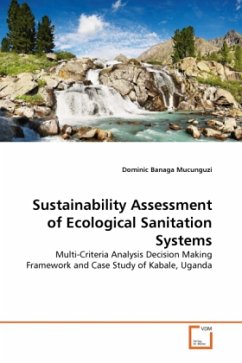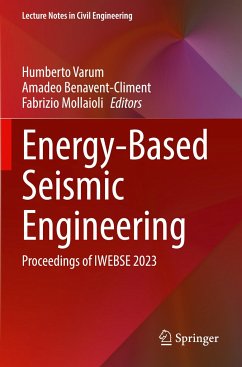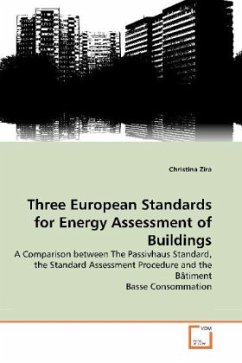
Energy Based Seismic Assessment of Degrading Systems
By Using Sophisticated Hysteresis and Damage Models
Versandkostenfrei!
Versandfertig in 6-10 Tagen
52,99 €
inkl. MwSt.

PAYBACK Punkte
26 °P sammeln!
Modern seismic design philosophy states that buildings should be designed not only for life safetybut also for damage control. To accomplish these dualobjectives, design guidelines have been revised toconstruct structures with predictable seismicperformance. Structural damage under seismic loadingis dependent on many factors as maximum displacement,dissipated energy during seismic response, number ofyield excursions and low-cycle fatigue. The complexdamage behavior of structural systems subjected toground motions can only be assessed when all of thesefactors are considered interactively. This ...
Modern seismic design philosophy states that
buildings should be designed not only for life safety
but also for damage control. To accomplish these dual
objectives, design guidelines have been revised to
construct structures with predictable seismic
performance. Structural damage under seismic loading
is dependent on many factors as maximum displacement,
dissipated energy during seismic response, number of
yield excursions and low-cycle fatigue. The complex
damage behavior of structural systems subjected to
ground motions can only be assessed when all of these
factors are considered interactively. This book
focuses on the assessment of energy dissipation
characteristics of structural systems through
experimental low-cycle fatigue data. Based on these
findings, an energy-based hysteresis and a damage
model are developed. These models are then used to
predict the seismic damage when structural systems
are exposed to actual ground motions. The simple
procedure introduced at the end of the book is deemed
to be a guideline for the structural engineers and
academicians who have been experiencing a new era in
seismic design philosophy: performance-based
engineering.
buildings should be designed not only for life safety
but also for damage control. To accomplish these dual
objectives, design guidelines have been revised to
construct structures with predictable seismic
performance. Structural damage under seismic loading
is dependent on many factors as maximum displacement,
dissipated energy during seismic response, number of
yield excursions and low-cycle fatigue. The complex
damage behavior of structural systems subjected to
ground motions can only be assessed when all of these
factors are considered interactively. This book
focuses on the assessment of energy dissipation
characteristics of structural systems through
experimental low-cycle fatigue data. Based on these
findings, an energy-based hysteresis and a damage
model are developed. These models are then used to
predict the seismic damage when structural systems
are exposed to actual ground motions. The simple
procedure introduced at the end of the book is deemed
to be a guideline for the structural engineers and
academicians who have been experiencing a new era in
seismic design philosophy: performance-based
engineering.












